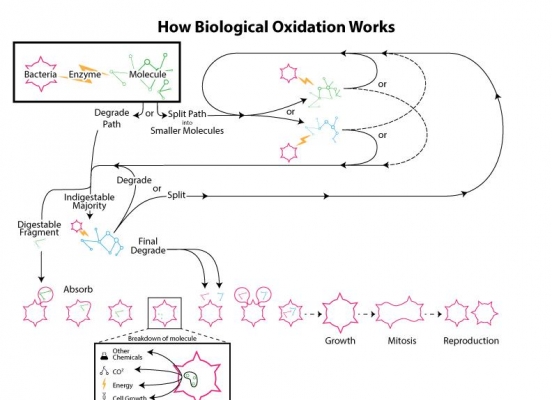Bio-Filtration, Bio-Oxidization & Bio-Scrubbing
Gulf Coast Environmental Systems has dozens of options for sustainable pollution control. Included in this is Biofiltration, a process to purify air and water biologically with the aid of micro-organisms, specifically bacteria.
What is Industrial Biofiltration?
Biofiltration is the process of utilizing natural biological oxidation for the destruction and removal of VOCs, odors and hydrocarbons. Simply put, biofiltration is the degradation of organic and inorganic substances by microorganisms. The air flows through what is called a packed bed of media causing the pollutants to transfer into a thin biofilm on the surface of the packed media. The microorganisms are housed in the microfilm and degrade the pollutants.
A biofiltration system requires minimal maintenance as the media can often last for many years. With synthetic media materials lasting up to 10 years and natural materials lasting an average of 2 to 5 years. The most common natural media materials include peat, vegetable mulch, bark, or wood chips. These media can usually be disposed of in a landfill or spread onto larger land areas when the material is replaced. Other options for material disposal can serve as an additional revenue stream. More information on media disposal can be found in this article.
The most common uses of biofiltration, bio scrubbers, and bio-oxidizers include in the processing of wastewater, the capture of VOCs in surface runoff, and macrobiotic oxidization of air contaminants. Biofiltration is specifically used to treat:
- Acetone
- Aliphatic Hydrocarbons
- Ammonia
- Anthranilates
- Aromatic Hydrocarbons
- Butadiene
- Carbon Disulfide
- Esters
- Ethanol
- Formaldehyde
- Heptane
- Hexane
- Hydrogen Sulfide
- Isopropanol
- Isopropyl acetate
- Ketones
- Methyl Ethel Ketone (MEK)
- Methanol
- n-Propanol
- N-Propyl Acetate
- Pesticides
- Phenol
- Pinenes
- Styrene
- Terpenes
- VM&P Naphtha
The Biofiltration Process
In biofiltration, bio-scrubbing, and bio-oxidization the biofilter is a bed micro-organism filled media. These microorganisms attach themselves and grow to form the biofilm, a biological layer. The biofilm contains a community of various microorganisms including bacteria, fungi, yeast, macro-organisms such as protozoa, worms, insect larvae, etc., as well as extracellular polymeric substances (ESP). The texture of the biofilm is often described as slimy and muddy.
The three phases of biofiltration include:
- The solid phase (media)
- The liquid phase (water)
- A gaseous phase (air)
Advantages
- Because microorganisms are retained within the biofilm, biofiltration allows the development of microorganisms with relatively low specific growth rates
- Biofilters are less subject to changes such as hydraulic shock and variable or intermittent loading
- Operational costs are usually lower than option such as activated sludge
- Final treatment result is less influenced by biomass separation since the biomass concentration at the effluent is much lower than for suspended biomass processes;
- Attached biomass becomes more specialized at a given point in the process train as a result of the lack of biomass return
To know more, please check the Gulf Coast Environmental Systems.

